Canadian
and New Zealand Soldiers, along with U.S. Marines, conduct a simulated raid on
a mock village during the Bold Quest 17.2 capabilities demonstration on Fort
Stewart, Ga., Oct. 26, 2017. U.S. Special Operations Command conducted the
demonstration with U.S., allied and partner nations to enhance communications
network interoperability to enhance warfighter capabilities.
1 / 12
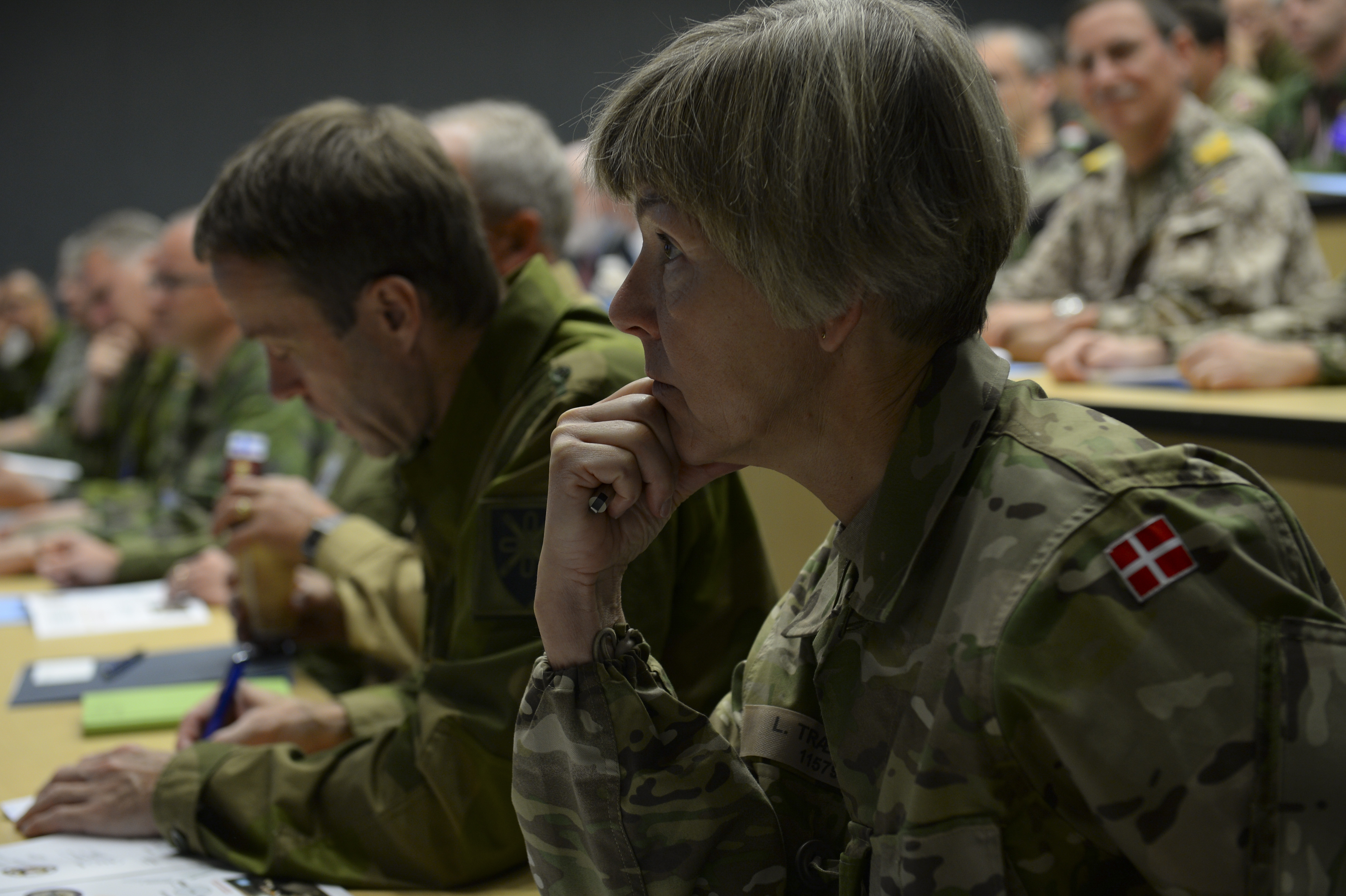
U.S., allied and partner nation military personnel, including Royal Danish Air Force Brig. Gen. Lone Traeholt, front, attend a briefing during the Bold Quest 17.2 capabilities demonstration on Fort Stewart, Ga., Oct. 26, 2017. U.S. Special Operations Command conducted the demonstration with U.S., allied and partner nations to enhance communications network interoperability. (Photo by U.S. Air Force Master Sgt. Barry Loo)
2 / 12
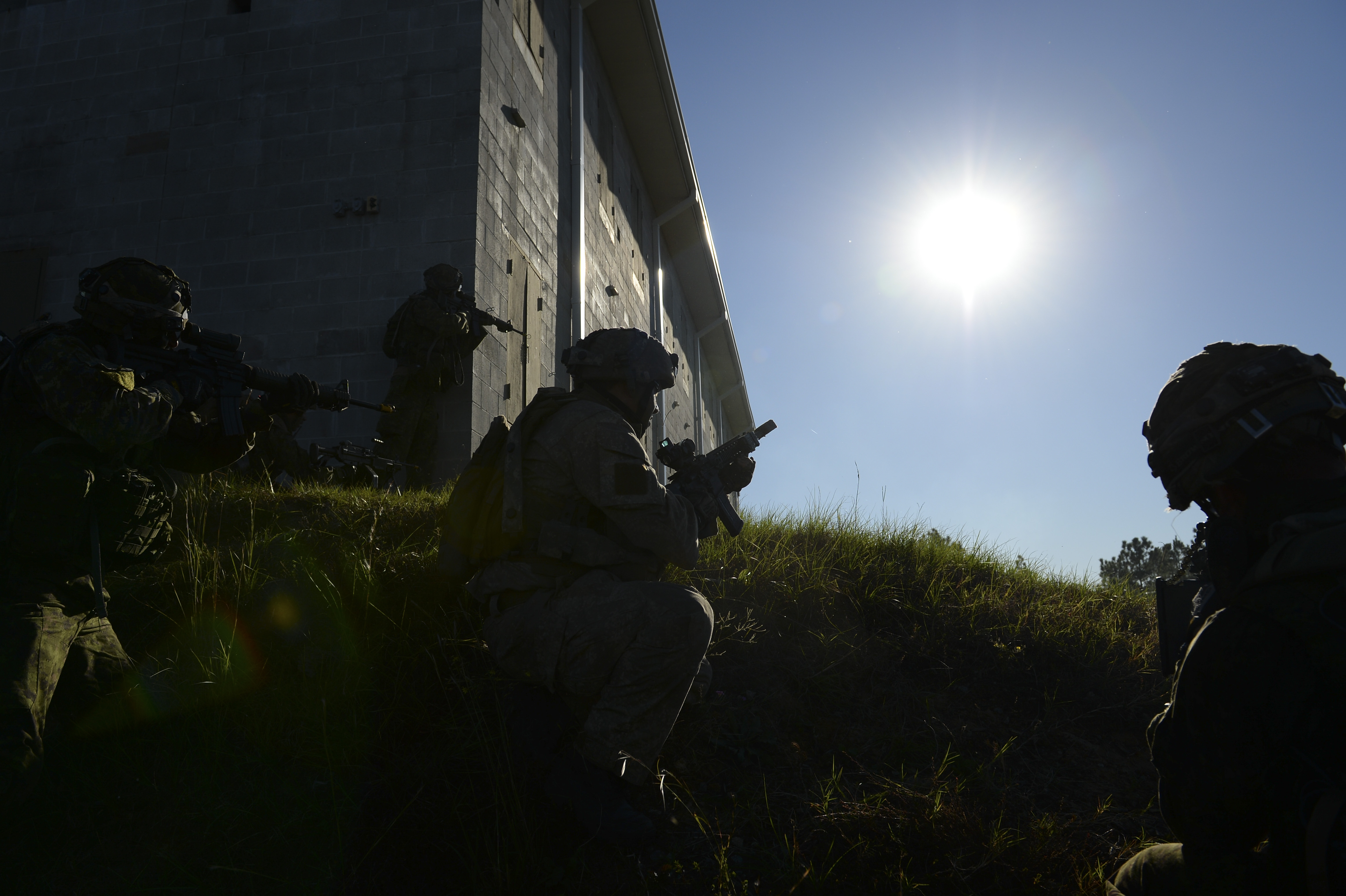
Canadian and New Zealand Soldiers conduct a simulated raid on a mock village during the Bold Quest 17.2 capabilities demonstration on Fort Stewart, Ga., Oct. 26, 2017. U.S. Special Operations Command conducted the demonstration with U.S., allied and partner nations to enhance communications network interoperability to enhance warfighter capabilities. (Photo by U.S. Air Force Master Sgt. Barry Loo)
3 / 12
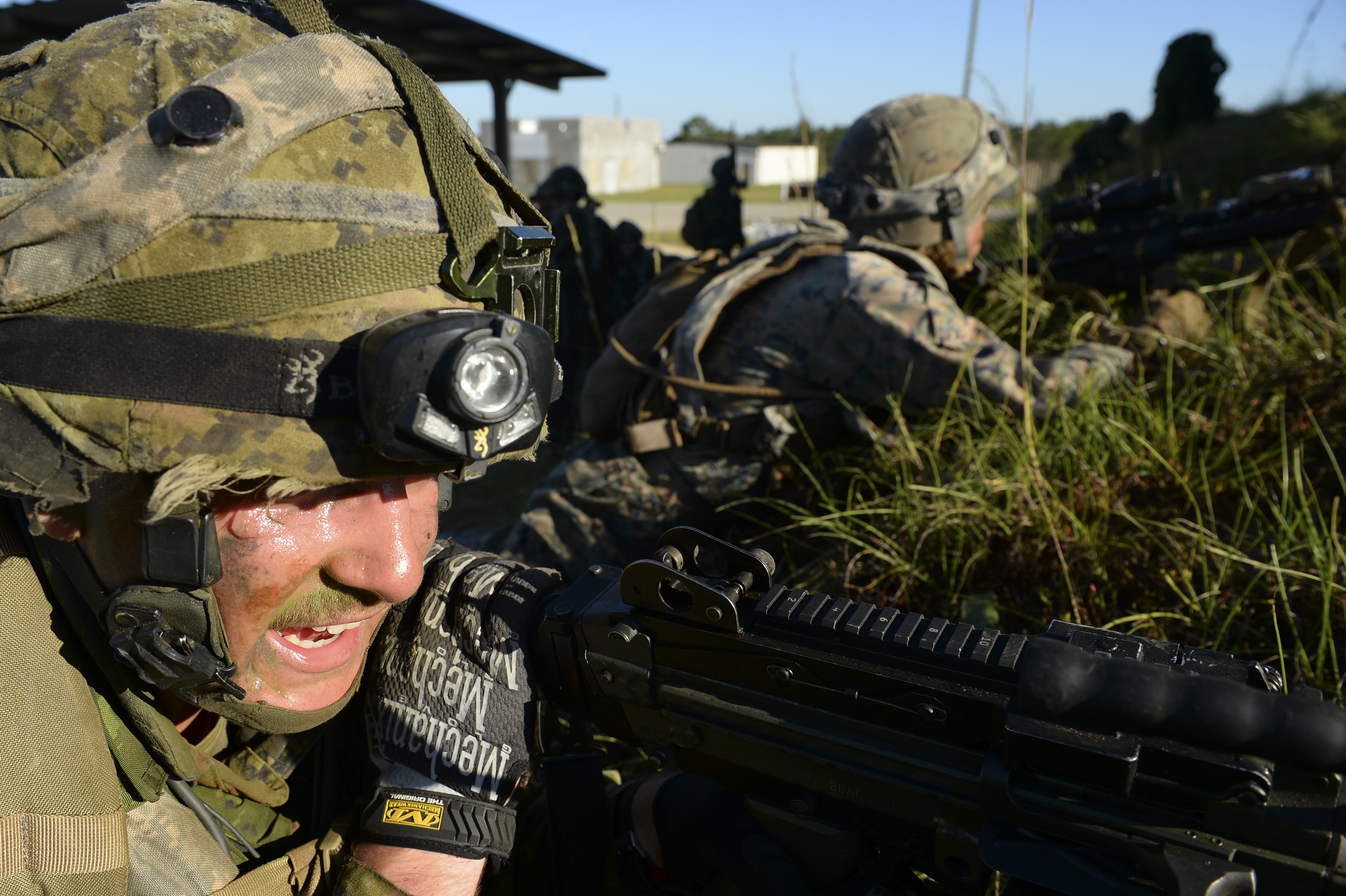
Canadian Soldiers and U.S. Marines conduct a simulated raid on a mock village during the Bold Quest 17.2 capabilities demonstration on Fort Stewart, Ga., Oct. 26, 2017. U.S. Special Operations Command conducted the demonstration with U.S., allied and partner nations to enhance communications network interoperability to enhance warfighter capabilities. (Photo by U.S. Air Force Master Sgt. Barry Loo)
4 / 12
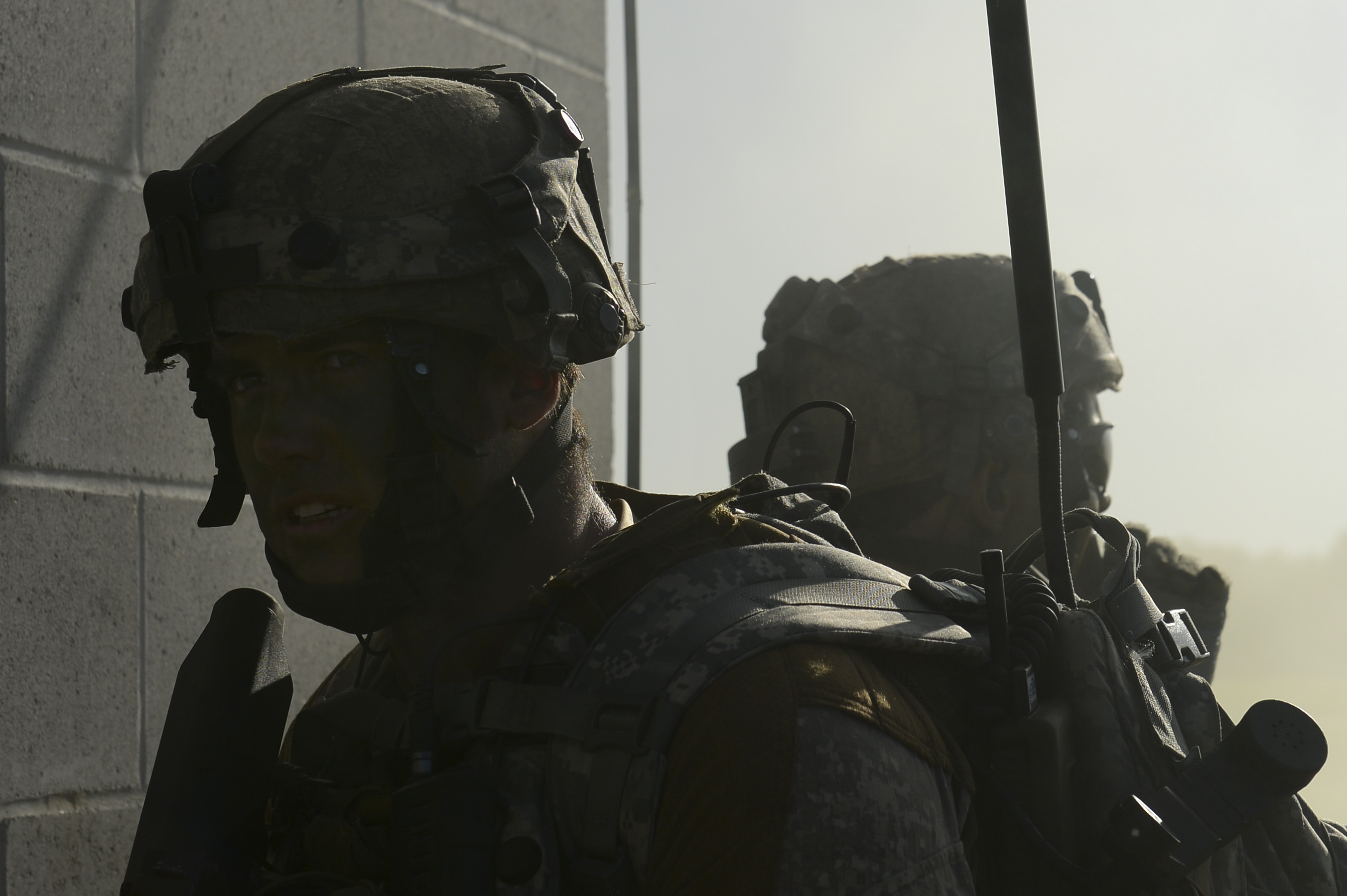
New Zealand Soldiers conduct a simulated raid on a mock village during the Bold Quest 17.2 capabilities demonstration on Fort Stewart, Ga., Oct. 26, 2017. U.S. Special Operations Command conducted the demonstration with U.S., allied and partner nations to enhance communications network interoperability to enhance warfighter capabilities.(Photo by U.S. Air Force Master Sgt. Barry Loo)
5 / 12
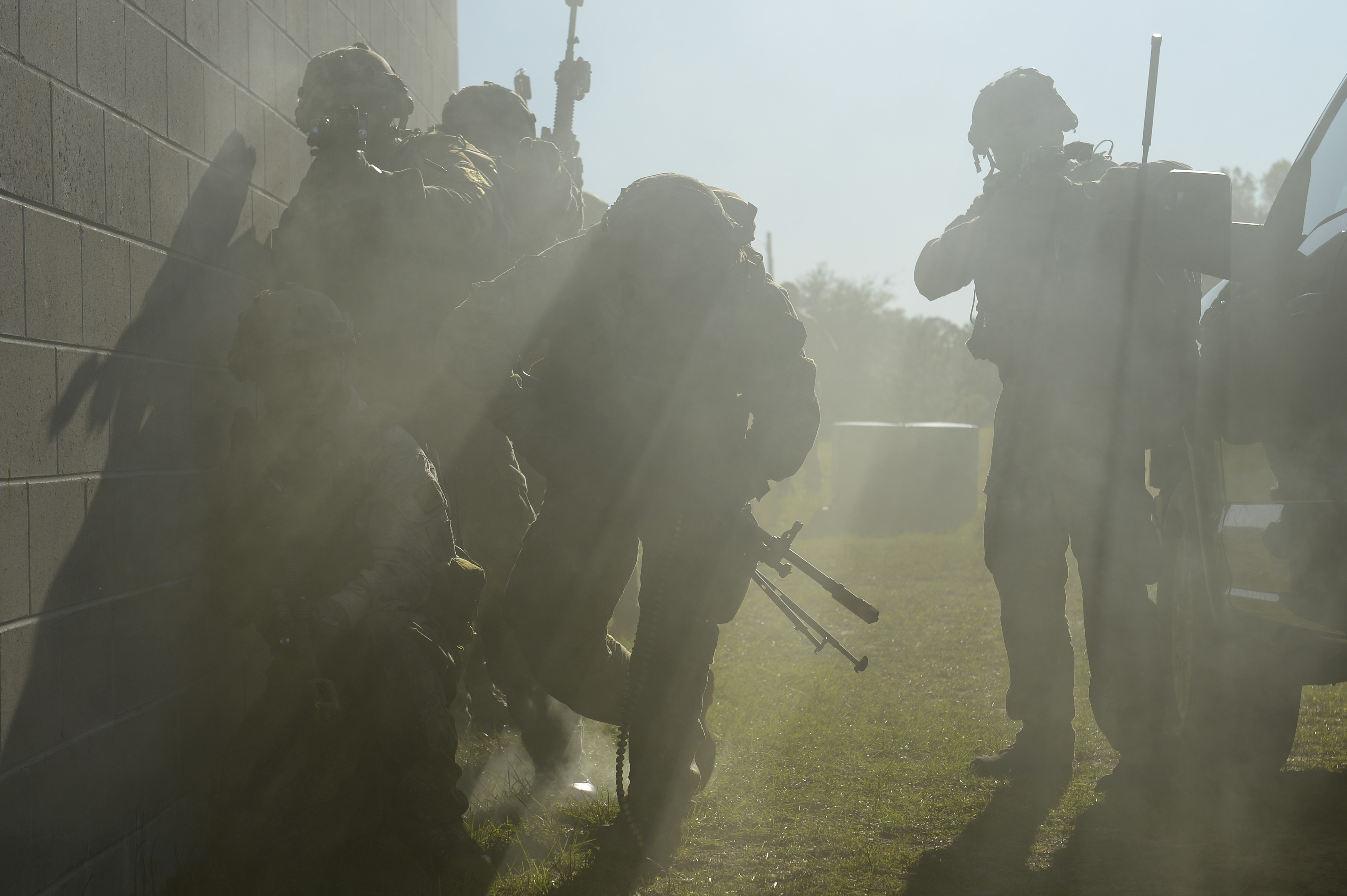
New Zealand Soldiers conduct a simulated raid on a mock village during the Bold Quest 17.2 capabilities demonstration on Fort Stewart, Ga., Oct. 26, 2017. U.S. Special Operations Command conducted the demonstration with U.S., allied and partner nations to enhance communications network interoperability to enhance warfighter capabilities. (Photo by U.S. Air Force Master Sgt. Barry Loo)
6 / 12
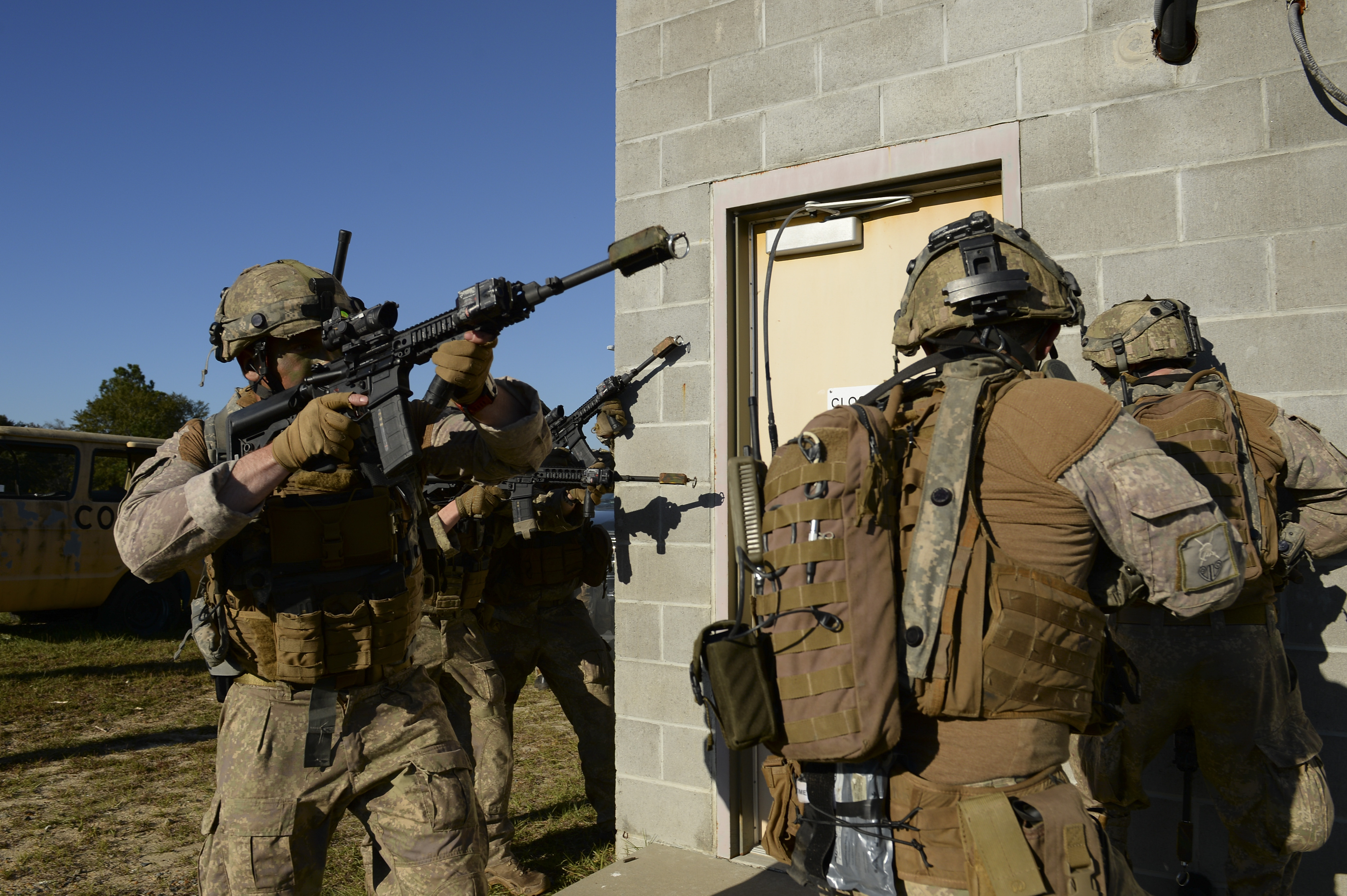
New Zealand Soldiers conduct a simulated raid on a mock village during the Bold Quest 17.2 capabilities demonstration on Fort Stewart, Ga., Oct. 26, 2017. U.S. Special Operations Command conducted the demonstration with U.S., allied and partner nations to enhance communications network interoperability to enhance warfighter capabilities. (Photo by U.S. Air Force Master Sgt. Barry Loo)
7 / 12
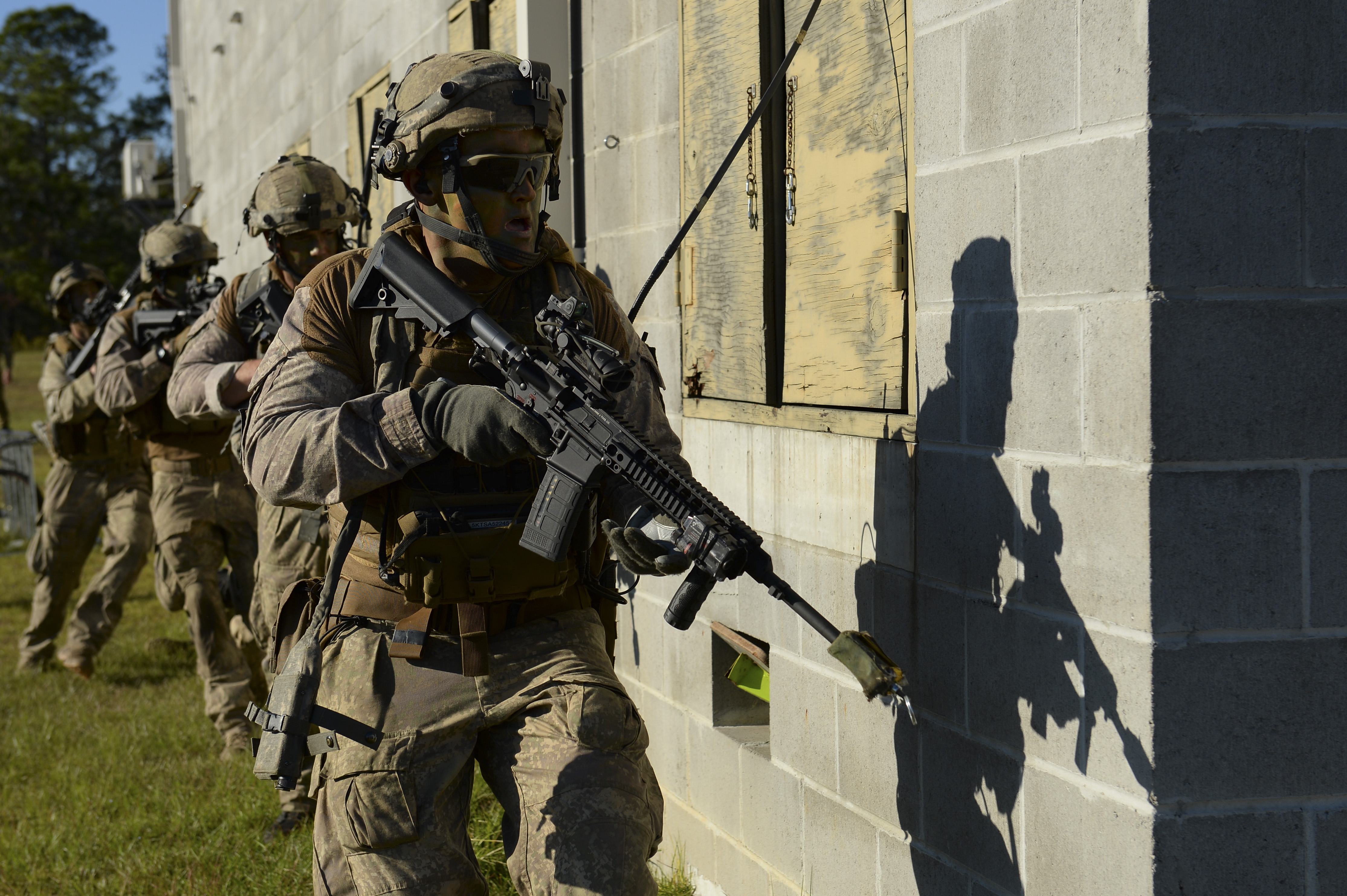
New Zealand Soldiers conduct a simulated raid on a mock village during the Bold Quest 17.2 capabilities demonstration on Fort Stewart, Ga., Oct. 26, 2017. U.S. Special Operations Command conducted the demonstration with U.S., allied and partner nations to enhance communications network interoperability to enhance warfighter capabilities. (Photo by U.S. Air Force Master Sgt. Barry Loo)
8 / 12
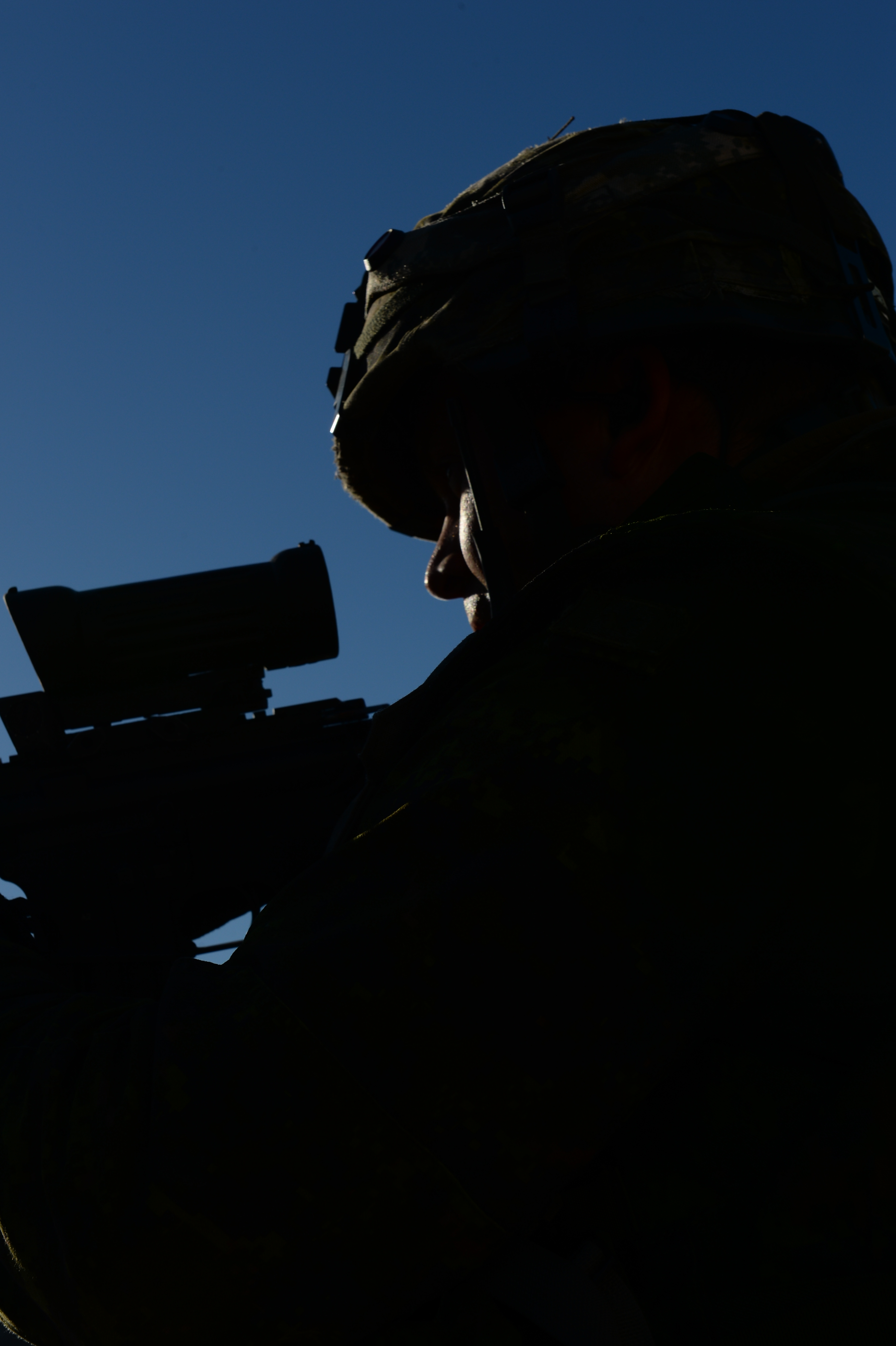
A Canadian Soldier conducts a simulated raid on a mock village during the Bold Quest 17.2 capabilities demonstration on Fort Stewart, Ga., Oct. 26, 2017. U.S. Special Operations Command conducted the demonstration with U.S., allied and partner nations to enhance communications network interoperability to enhance warfighter capabilities. (Photo by U.S. Air Force Master Sgt. Barry Loo)
9 / 12
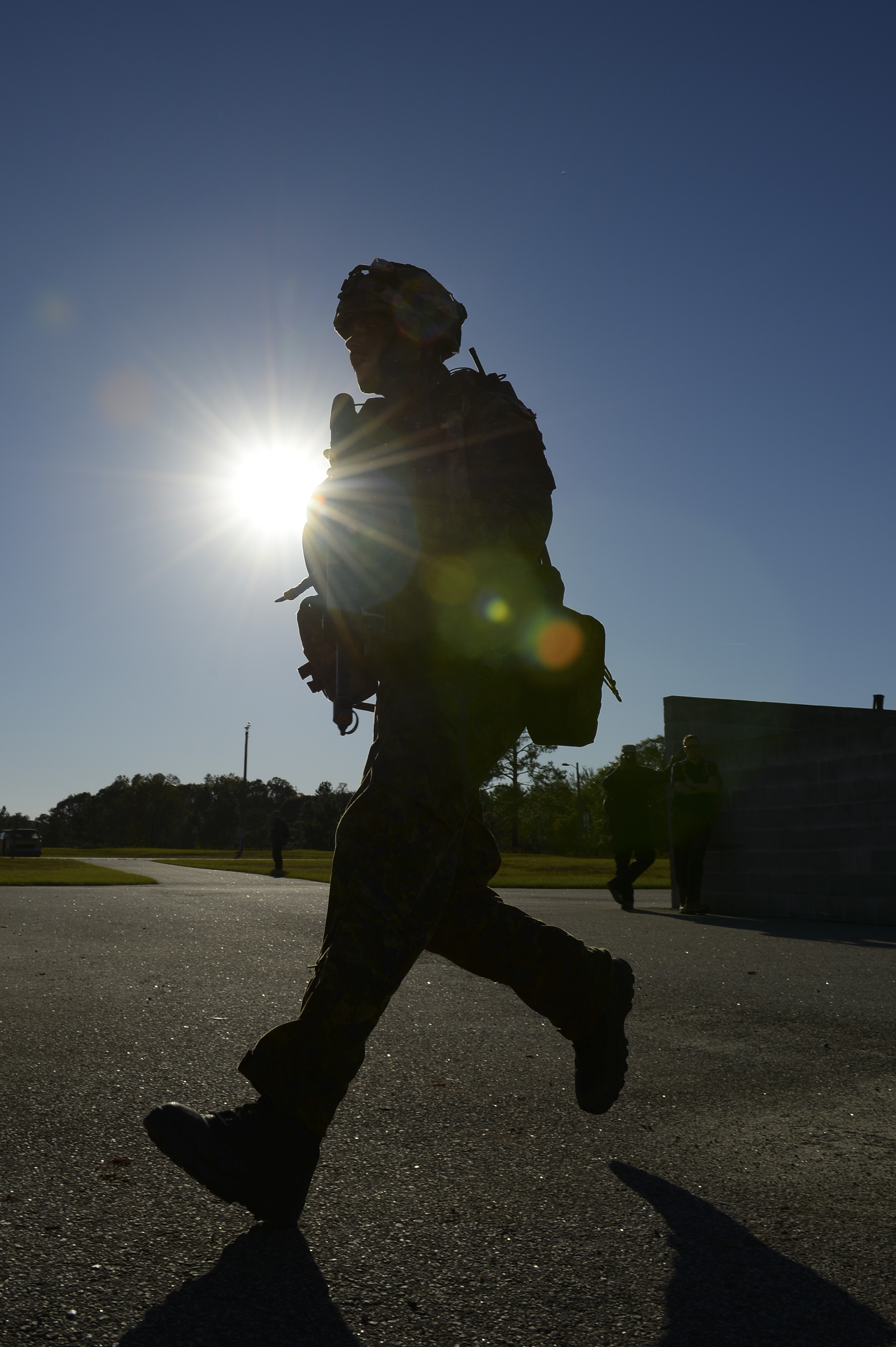
A Canadian Soldier conducts a simulated raid on a mock village during the Bold Quest 17.2 capabilities demonstration on Fort Stewart, Ga., Oct. 26, 2017. U.S. Special Operations Command conducted the demonstration with U.S., allied and partner nations to enhance communications network interoperability to enhance warfighter capabilities. (Photo by U.S. Air Force Master Sgt. Barry Loo)
10 / 12
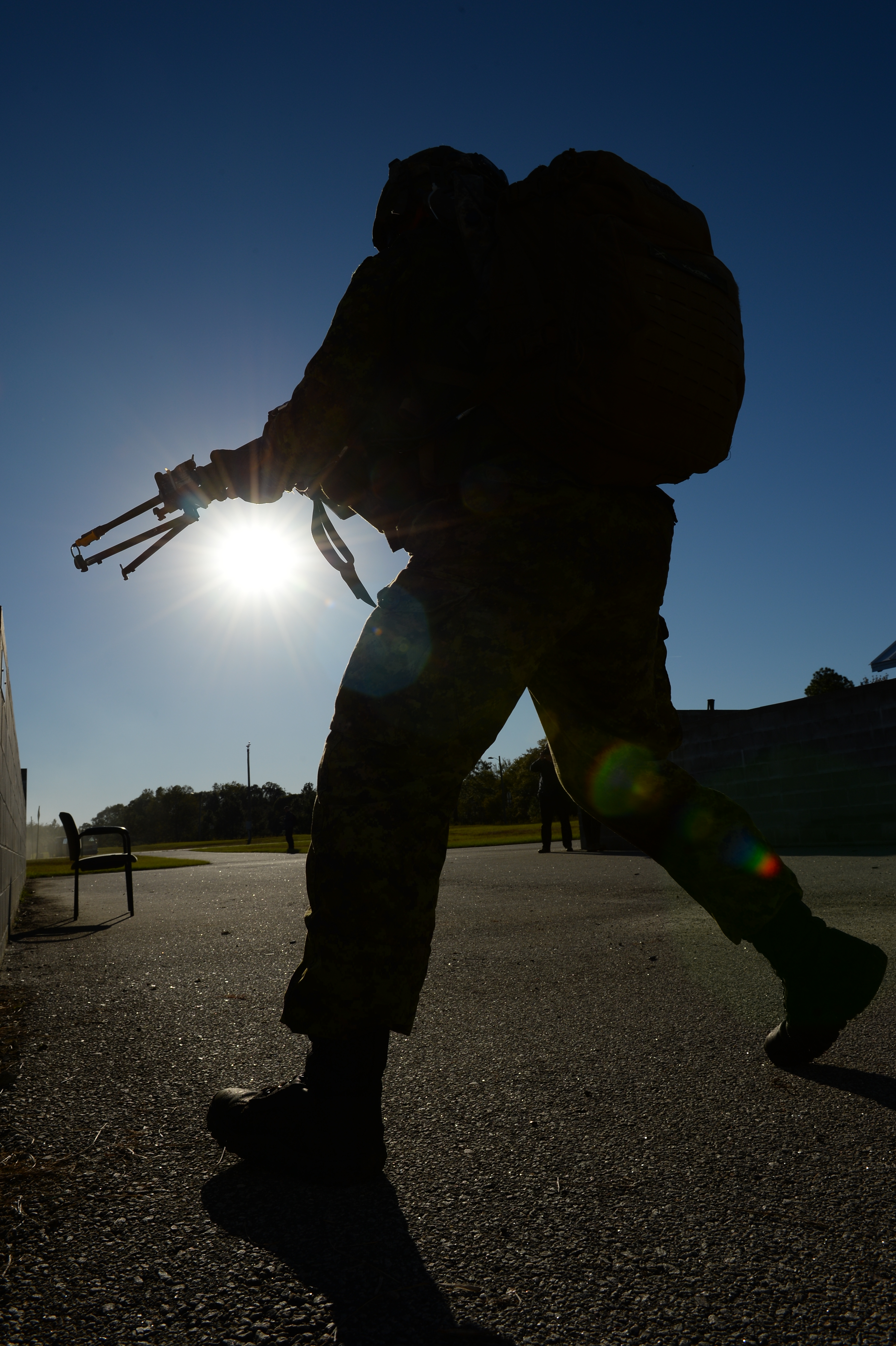
A Canadian Soldier conducts a simulated raid on a mock village during the Bold Quest 17.2 capabilities demonstration on Fort Stewart, Ga., Oct. 26, 2017. U.S. Special Operations Command conducted the demonstration with U.S., allied and partner nations to enhance communications network interoperability to enhance warfighter capabilities. (Photo by U.S. Air Force Master Sgt. Barry Loo)
11 / 12
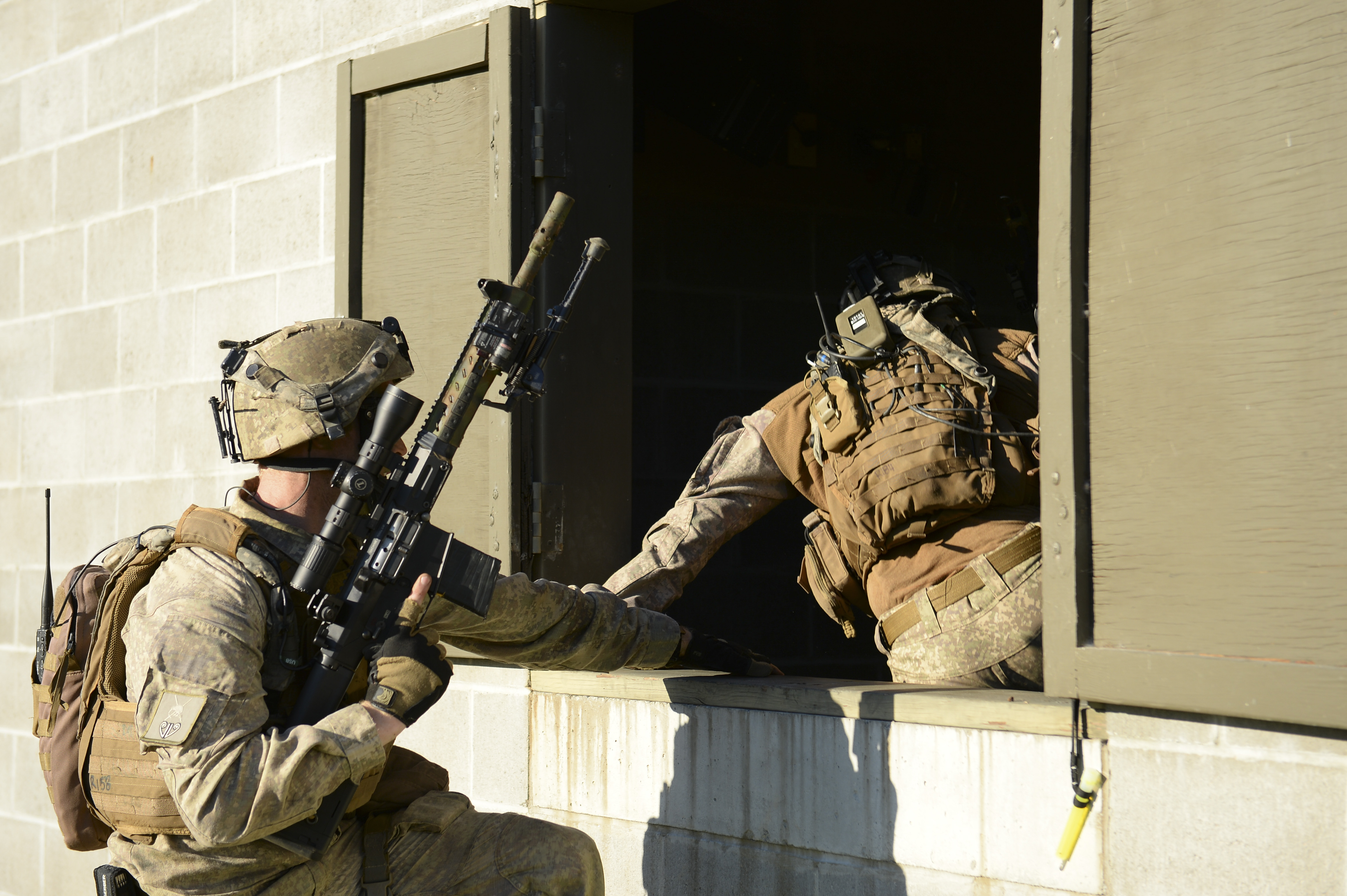
New Zealand Soldiers conduct a simulated raid on a mock village during the Bold Quest 17.2 capabilities demonstration on Fort Stewart, Ga., Oct. 26, 2017. U.S. Special Operations Command conducted the demonstration with U.S., allied and partner nations to enhance communications network interoperability to enhance warfighter capabilities. (Photo by U.S. Air Force Master Sgt. Barry Loo)
12 / 12
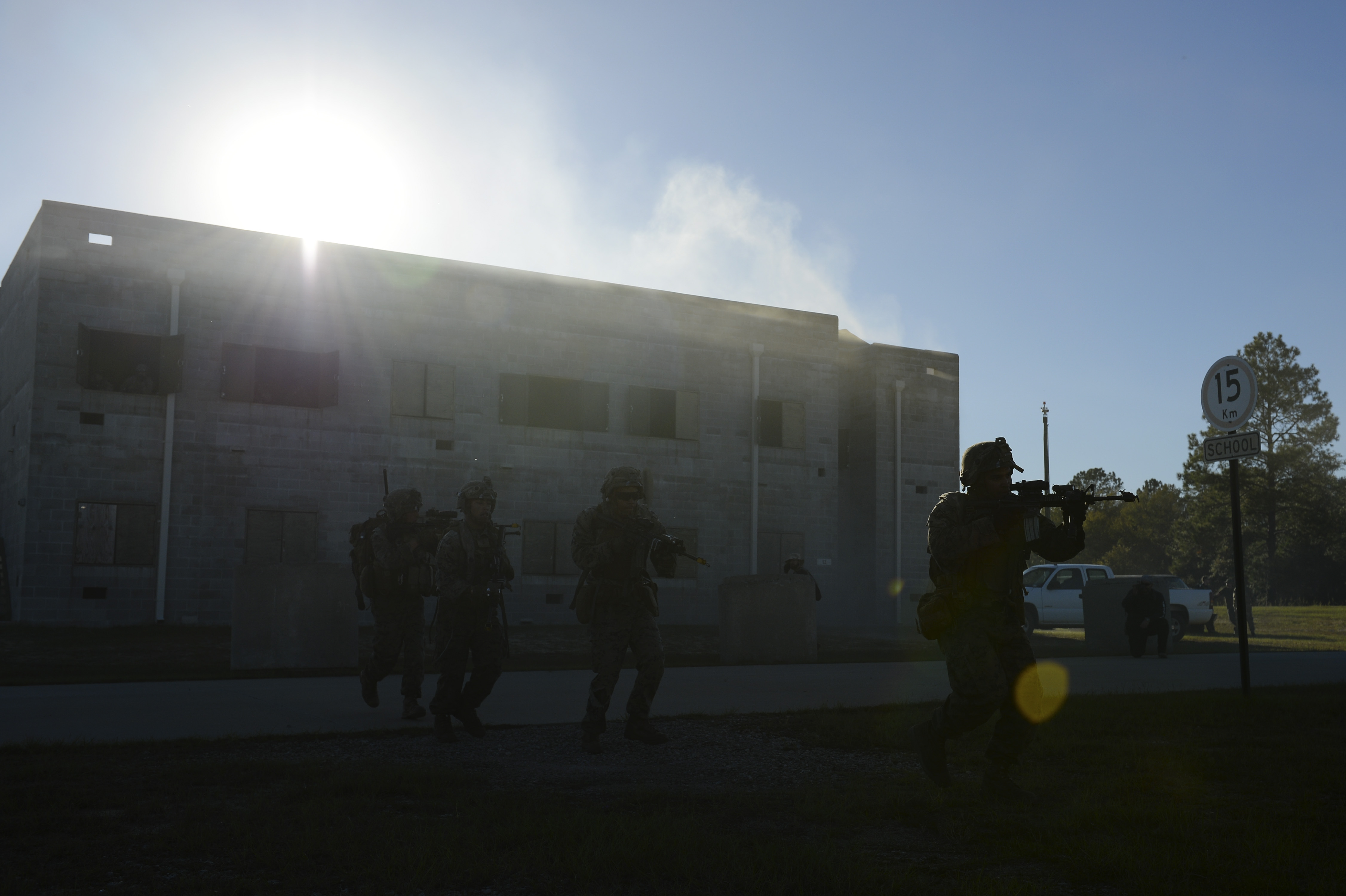
U.S. Marine infantryman, K Company, 3rd Battalion, 8th Marines, conduct a simulated raid on a mock village during the Bold Quest 17.2 capabilities demonstration on Fort Stewart, Ga., Oct. 26, 2017. U.S. Special Operations Command conducted the demonstration with U.S., allied and partner nations to enhance communications network interoperability to enhance warfighter capabilities. (Photo by U.S. Air Force Master Sgt. Barry Loo)
U.S. Special Operations Command permanently hosts the largest gathering of international Special Operations Forces personnel outside of NATO, known as J3-International, according to U.S. Air Force Maj. Eric Doi, J3-I engagement branch chief.
J3-I and its international representatives form a unique team, and provide unique opportunities for coordination, collaboration, and learning for the USSOCOM enterprise.
"We embody the SOF truth: people are more important than hardware," Doi said.
The broad purpose of J3-I is to provide a headquarters component for personnel seeking to coordinate or collaborate with partner nation SOF on current or future operations, capability development, or other multinational issues.
"Every officer and senior noncommissioned officer assigned was hand-picked by his nation's special operations command to serve a one to three year tour at USSOCOM headquarters," said Doi. "All representatives come with a broad range of special operations experience, often gained in combat."
Collectively, the J3-I representatives have amassed more than thirty years of combat deployments since 9/11, and most have forces currently deployed in support of ongoing global operations, he said.
"In addition to a history of strategic and operational skillsets, many have tactical backgrounds as snipers, combat divers, counter-insurgents and more," he said. "The J3-I ranks include former commanders and representatives from many globally respected conventional and special operations organizations, including France's Commando Kieffer, the Lithuanian Jaegeris, and the German Kommando Spezialkraft among others."
To further enable collaboration, J3-I acts as a hub for USSOCOM's special operations liaison officers, who serve at select U.S. embassies overseas.
J3-I conducts events working with the theater special operations commands, partner nation SOF headquarters, and other entities such as USSOCOM's service components.
An important aspect of the J3-I mission is to identify and help close SOF partner nation interoperability gaps to enhance their ability to exchange information, services and data with U.S. forces. One specific way to do so is through the Joint Staff's Bold Quest series of technical and capability demonstrations, where J3-I is USSOCOM's Office of Primary Responsibility.
From Oct. 2 to Nov. 4, 2017, J3-I SOF exchange officers teamed with international partners from 7 nations to form a Combined Joint Special Operations Task Force response cell for Bold Quest 17.2 at Fort Stewart, Georgia.
"This is less an exercise than an experimental platform," said U.S. Army Col. Matthew McHale, USSOCOM J3-I division chief and CJSOTF cell director. "J3-I's primary role in Bold Quest 17.2, was to ensure international SOF received doctrinally appropriate SOF command and control during the event, which focused on air-to-ground coordination."
The demonstration allowed mission partners to share information as they would when fighting together in a coalition environment. It involved approximately 1,800 personnel both on-site, and operating or supporting from distributed locations, where international participants assessed capabilities associated with digitally-aided close air support, friendly force tracking and ground-to-air situational awareness, countering unmanned aerial systems, and cyber simulation capabilities.
"We need a lot of nations to be here so we can verify what we have put together actually works when we plug it in," said Norwegian Army Col. Tollak Tollaksen, director of Norwegian Battle Laboratory and Experimentation. "It's a great networking experience."
During BQ 17.2, Norwegian SOF worked toward enhancing joint intelligence, surveillance and reconnaissance, joint targeting, and joint fires, as well as the communications platforms supporting them all.
"Ultimately, enhancing network communications integration will better allow the U.S., as well as its allied and partner nations to fight current and future conflicts," McHale said. "By having cohesive networks, multi-national SOF can operate more readily in a multitude of environments. And that helps us to fight together faster wherever we come to the battlefield."
Bold Quest is just one example of how the international SOF representatives within J3-I are helping to improve warfighting across the enterprise. Through J3-I, international SOF representatives participate in the global synchronization processes, joint pre-mission training for Operations Inherent Resolve and Resolute Support, and other joint and component-level training.
In September, Lt. Col. Darius Baricus, J3-I's Lithuanian SOF Exchange Officer, deployed to the Muscatatuck Urban Training Center in Indiana to support pre-deployment training by U.S. Army Special Operations Command's 6th Psychological Operations Battalion, providing Soldiers there insight on the operational environment and threat from a European perspective, as well as the U.S.-Lithuanian partnership plan.
"It was an invaluable experience, and we look forward to doing it again," he said.
Over time, J3-I has continued to grow its ranks. With member nations currently at 23, they will continue to expand the number of coalition partners to enhance and strengthen the international SOF community.
"In a world of constantly evolving, globally-oriented threats, it's critical that we continue to develop interoperability with our allies to enhance and strengthen the international SOF community," said McHale.
